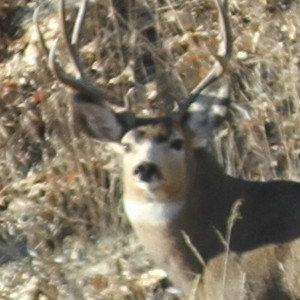Mule deer, so named for their large ears, which resemble those found on a mule, can be found throughout the western regions of the U.S., Canada, and Mexico. These large deer have black-tipped tails and grayish-brown fur with a white patch on their rumps. Bucks have large, bifurcated (forked) antlers that they shed in late winter, after which time they almost immediately start growing new ones. Males typically weigh between 200 and 350 lbs., though trophy bucks can exceed 400 lbs. or more. Females are considerably smaller, topping out at no more than 200 lbs.
Hunting mule deer will take you into extremely rough terrain, so it’s important that you be physically fit and mentally tough. Depending on your hunting grounds, you might venture into high mountain ranges or across arid deserts. Mule deer can easily navigate this tough terrain by “stotting.” Also known as “plonking,” mule deer stot by springing up and landing using all four feet simultaneously in a bouncing motion. In this manner, they can cross distances up to 15 feet in a single bounce. Because they can cover so much ground, we often spike out and hunt by horseback. We may also employ the spot-and-stalk method. In any case, be prepared for plenty of glassing and waiting, waiting and glassing.
You can hunt mule deer using bow and arrow or rifle. You’ll want to take along a .270 Winchester, .280 Remington, .30-06, or .300 Remington with soft-point, 180-grain bullets. We hunt mule deer in Montana and Mexico. Depending on the area you choose for your hunt, mule deer hunts can be combined with hunts for elk and whitetail deer.
Contact us to start planning your mule deer hunt today!




